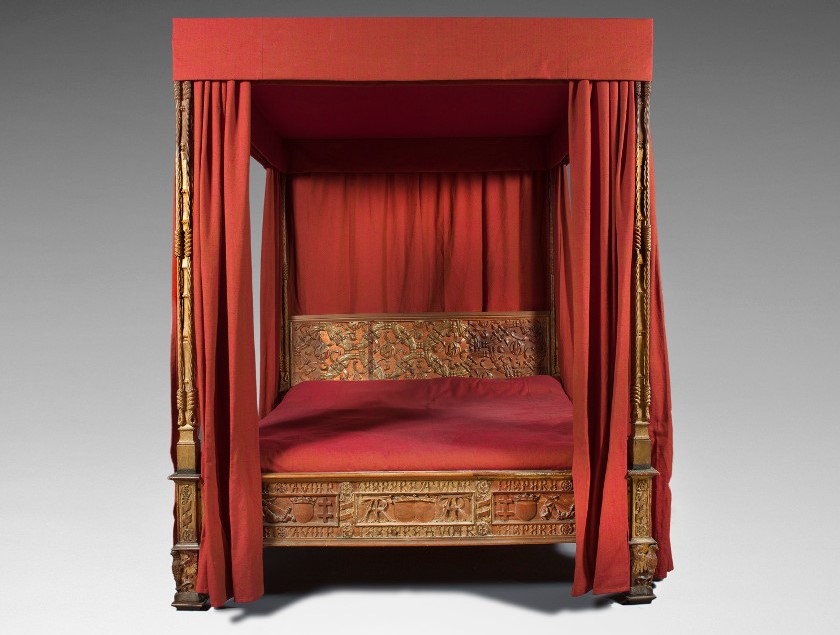1515
Bois sculpté, doré, peint, polychromie
H. 258 ; L. 231 ; l. 219 cm
Inv. D.95.255
Dépôt du Mobilier national, 1872
Made for the marriage of Duke Antoine de Lorraine and Renée de Bourbon in 1515, this bed is one of the oldest in a French public collection and one of the key works in the Musée Lorrain collection.
The rich symbolism of the decoration turns around the House of Lorraine. In addition to the cross of Lorraine, the crossbars of the bed bear the arms of duke Antoine and the motif of an armed arm emerging from the clouds, used by the Lorraine family since the 15th century, while the young eagles (alérions) give their shape to the feet of the bed. The House of Bourbon is also present, notably in the motto "Espérance" (Hope), found on the belts surrounding the palms at the four corners of the bed.
The object is also a reminder of the couple's union, notably through the presence of the monograms of Antoine and Renée intertwined, and the mottos chosen by the duke and duchess at their wedding: "I hope to have", a call to fertility for Antoine, and "One for ever", an oath of fidelity for Renée. The motif of the armillary sphere adorning the panel at the head of the bed could allude to these mottos: in the early 16th century, "hope" could be pronounced “esper”, a pronunciation almost identical to that of the word "sphere" (espere). As for the flower crowns, they are reminiscent of the bridal bouquets worn on the wedding day.
Thanks to inventories from the 16th century, we know the material and colour of the textiles that made up the original ensemble. White damask curtains and a purple taffeta quilt complemented the red satin canopy. In addition to this rich polychromy, wreaths of flowers and spheres embroidered in gold and silver thread decorated the bedspread.
Rediscovered in the early 19th century, the wooden components of the bed were sold to the State under the July Monarchy, restored and then deposited in the Musée lorrain in 1872.

